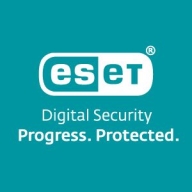

Find out what your peers are saying about CrowdStrike, SentinelOne, Microsoft and others in Endpoint Detection and Response (EDR).
ESET PROTECT Elite is an all-in-one prevention, detection & response combining enterprise-grade XDR with complete multilayered protection.
ESET PROTECT Elite is the ultimate cybersecurity solution that offers top-notch endpoint protection against ransomware and zero-day threats. It employs a robust multilayered approach, combining various cutting-edge technologies to strike the perfect balance between performance, threat detection, and minimizing false positives. With automated malware removal and mediation, it ensures the utmost security for your organization's data, covering servers, network file storage including OneDrive, and multi-purpose servers to guarantee uninterrupted business operations. ESET PROTECT Elite also features powerful native encryption, enhancing data security to meet compliance regulations. Furthermore, it provides cloud-based threat defense against targeted attacks and new, previously unseen threats like ransomware.
This comprehensive package extends its protection to Microsoft 365 applications, shielding against malware, spam, and phishing attacks through an intuitive cloud management console. Additionally, it offers extra layers of security against spam, phishing, malware, and threats from outdated systems and applications, with features such as automated scanning, patching, and customizable policies. ESET PROTECT Elite empowers risk managers and incident responders with exceptional threat and system visibility, enabling them to conduct rapid, in-depth root cause analysis and respond promptly to incidents. Paired with the tried-and-tested prevention capabilities of ESET Endpoint Protection products, ESET Inspect is a cloud-delivered, XDR-enabling solution designed to detect advanced persistent threats, block zero-day threats, and safeguard against ransomware and policy violations. To complete this comprehensive security suite, there's an easy-to-use, highly effective mobile-based multi-factor authentication (MFA) solution that combats weak passwords and unauthorized access, ensuring your organization stays secure. Trust in ESET PROTECT Elite to fortify your cybersecurity defenses and protect your business from the ever-evolving threat landscape.
Qualys Multi-Vector EDR is designed for real-time threat detection and response, offering comprehensive visibility into potential security breaches across endpoints.
This solution integrates seamlessly with other Qualys modules, facilitating automated workflows that streamline incident management and enhance efficiency in monitoring and mitigating cyber threats. With features like real-time monitoring, detailed reporting, and proactive alerting, security teams can quickly identify and address vulnerabilities. While appreciated for its scalability and ease of deployment, users suggest improvements in integration, reporting, and configuration to further enhance its capabilities.
What are the key features of Qualys Multi-Vector EDR?Qualys Multi-Vector EDR is implemented across industries such as finance, healthcare, and retail, where real-time threat detection and automated response are critical. Its ability to integrate with existing systems and provide detailed reporting makes it a valuable asset for enhancing cybersecurity measures in diverse environments.
We monitor all Endpoint Detection and Response (EDR) reviews to prevent fraudulent reviews and keep review quality high. We do not post reviews by company employees or direct competitors. We validate each review for authenticity via cross-reference with LinkedIn, and personal follow-up with the reviewer when necessary.